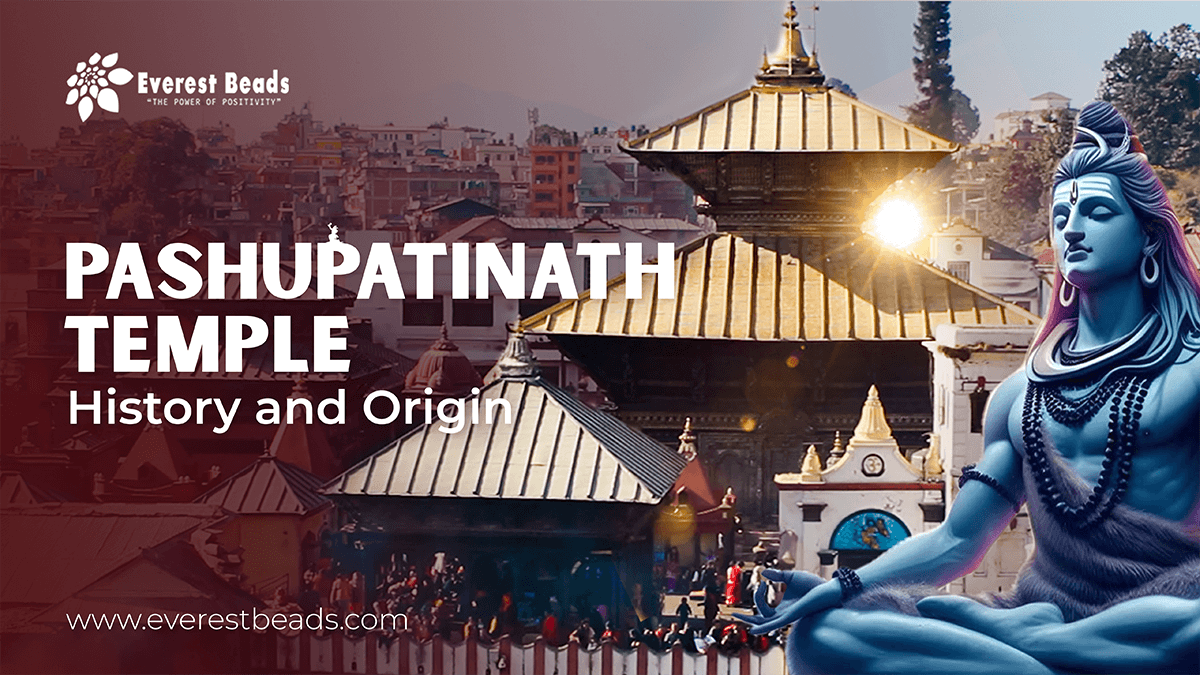
Pashupatinath Temple: History and Origin
Introduction to Pashupatinath Temple: History and Origin
After the great war of Mahabharata, the five Pandavas Yudhishthira, Bhima, Arjuna, Nakula, and Sahadeva. It felt deep sorrow for the destruction caused. They had fought against their own family, and the guilt of taking so many lives troubled them.
To find peace and forgiveness, they asked Lord Vishnu for help. Vishnu advised them to pray to Lord Shiva, as only he could forgive their sins.
Following this advice, the Pandavas began a spiritual journey through the Himalayas to find Lord Shiva. However, Shiva did not want to forgive them easily. To avoid them, he took the form of a bull and wandered through the forests.
Divine Encounter at Kedarnath
The Pandavas eventually reached Kedarnath, where they sensed Shiva’s presence. When they saw a unique bull among a herd, Bhima, known for his great strength, attempted to capture it. But the divine bull ran into the forest, and as Bhima grabbed its hump, the bull began sinking into the ground. Despite Bhima’s efforts, only the hump remained visible.
At this moment, Lord Shiva revealed himself and forgave the Pandavas, impressed by their persistence and devotion. He blessed them and guided them towards their final journey to heaven. The places where different parts of Shiva's body appeared became the sacred Panch Kedar temples: Kedarnath, Tungnath, Rudranath, Madhyamaheshwar, and Kalpeshwar.
Origin of Pashupatinath Temple

The origins of Pashupatinath Temple are wrap in mythology and divine intervention. According to Hindu legend, Lord Shiva once took the form of a deer and roamed the lush forests of the Kathmandu Valley.
The gods, in search of Shiva, finally discovered him at the banks of the Bagmati River. Realizing his presence, they caught him, and as Shiva tried to escape, one of his antlers broke and was later worshipped as the sacred Shiva Linga. Over time, this divine site became the foundation of the Pashupatinath Temple.
Another popular legend states that a cow, believed to be the incarnation of Kamadhenu, used to offer its milk at a specific spot near the river every day. Intrigued by this mysterious act, a farmer dug into the ground and uncovered a naturally formed Shiva Linga. Recognizing its sanctity, the locals began to worship it, leading to the establishment of the temple.
Pashupatinath Through the Ages
Over the centuries, the temple complex has continued to evolve. The reign of the Shah and Rana rulers saw additional contributions to its glory. King Mahendra, one of Nepal’s most influential monarchs, played a crucial role in constructing the main entrance gate, which features a striking image of Lord Shiva.
Pashupatinath’s cultural and religious significance was globally recognized when UNESCO declared it a World Heritage Site in 1979. Despite facing natural calamities, such as earthquakes, and human interventions, the temple remains a timeless beacon of faith and devotion.
Spiritual and Historical Significance
The Pashupatinath Temple is a holy place located on the banks of the Bagmati River. People from all over the world come here to pray, meditate, and seek peace. It is also known for its cremation site, which reminds us that life and death are a natural cycle.
A special feature of the temple is the Jyotirlinga, which has four visible faces of Lord Shiva, each showing a different side of him:
Tatpurusha – It represents Shiva as the supreme soul.
Sadhyojat – It stands for creation.
Vamadeva – It symbolizes care and protection.
Aghora – It represents destruction and change.
There are several other legends associated with Pashupatinath’s origin:
Lord Shiva as a Deer: It is said that Lord Shiva and Goddess Parvati once visited the Kathmandu Valley and were so enchanted by its beauty that Shiva took the form of a deer and wandered in the forest. When the gods searched for him and finally found him, he refused to leave. Upon insistence, he announced that he would be worshipped there as Pashupatinath.
The Kamadhenu Cow Legend: Another legend states that a divine cow, Kamadhenu, used to pour milk over a specific spot every day. Curious locals dug the spot and discovered a self-manifested Shiva Lingam. This sacred site became the foundation of the Pashupatinath Temple.
Spiritual and Cultural Importance
Pashupatinath Temple is one of the 12 Jyotirlingas and is considered highly sacred. Devotees believe that worshipping at this temple absolves sins and grants spiritual enlightenment. The temple complex is also home to many Hindu rituals, sadhus, and festivals.

Every evening, the grand Bagmati Aarati mesmerizes visitors with rhythmic chants, sacred fire rituals, and the collective devotion of worshippers. Maha Shivaratri, one of the most important Hindu festivals, sees the temple filled with thousands of devotees who gather to pay homage to Lord Shiva.
Additionally, the temple complex serves as an important site for Hindu cremation rituals. The Arya Ghat along the Bagmati River is where final rites are performed, signifying the soul’s journey towards.
Major Festivals Celebrated at Pashupatinath Temple
Maha Shivaratri: One of the grandest celebrations, where thousands of devotees gather for prayers and meditation.
Teej: A festival dedicated to Goddess Parvati, where women observe fasts and pray for the well-being of their husbands.
Shrawan Mondays: The entire month of Shrawan is dedicated to Shiva, with Mondays being the most auspicious days for prayers.
Ekadashi and Purnima: Ekadashi and Purnima are observed every fortnight at Pashupatinath Temple with special rituals and prayers dedicated to Lord Shiva.
Tourism and Visitor Experience
Pashupatinath Temple is not just a religious site but also a major tourist attraction. Many visitors come to witness the spiritual energy, participate in evening aartis, and observe Hindu rituals.
Non-Hindus are not allowed inside the main sanctum but can explore the surrounding areas.
Photography is restricted inside the temple.
Modest dress and respectful behavior are expected within the temple premises.
Read More: Maha Kumbh Mela Date and History
Divine Connection to Lord Shiva and Rudraksha
Lord Shiva is often depicted wearing Rudraksha beads, and their importance is mentioned in many scriptures. A famous verse states:
"Sarveshamapi Bastrana Dharane Ye Sama Bhaveta: Tatsmatasarva Prayetnen Rudraksha Pudra Dharya"
This means that the one who wears all Rudraksha beads attains a divine connection with Shiva. Wearing Rudraksha is believed to free the wearer from sins, guide them on a spiritual path, and bring inner peace.
Conclusion
Pashupatinath Temple is more than just a beautiful architecture. It is a sacred place that represents Hindu faith and Nepal’s rich culture. With its deep history, myths, and religious traditions, it continues to inspire millions. Whether people visit for worship, history, or spiritual peace, this temple remains a lasting symbol of faith and tradition.
Read More : Significance and Importance of celebrating MahaShivratri 2024
